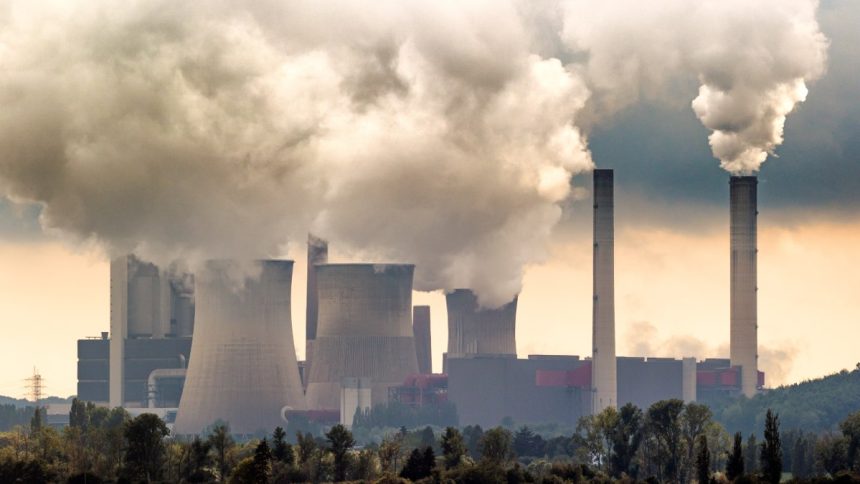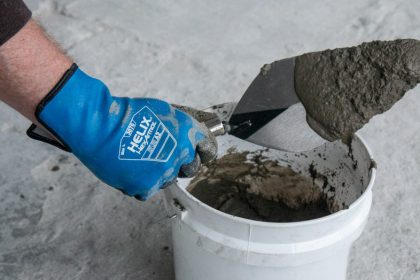With an ongoing housing crisis and a nation that’s outgrown much of its infrastructure, it’s no wonder most Aussies are welcoming the country’s construction boom.
But as our builders get underway with the seemingly impossible task of building 1.2 million homes over the next five years, many are concerned that solving one crisis could exacerbate a different one.
That’s because Australia has also set it’s eyes on reducing carbon emissions, with the nation needing to reach net zero by 2050 to meet its Paris Agreement target.
Both are commendable goals that could solve real issues for everyday Australians.
Unfortunately, however, large-scale active construction and carbon reduction don’t exactly go hand in hand.
Currently, the building sector is responsible for 20 per cent of all emissions produced every year, most of which are a result of concrete, steel and aluminium.
In order to meet those essential climate targets, the construction industry will be required to reevaluate its embodied carbon—or, in simpler terms, accurately measure and reduce the carbon dioxide emissions released before and during the construction process.
These mounting emissions include everything involved in the construction operation, from building to manufacturing and transporting the materials used.
But, according to sustainable construction expert Dr Ali Kashani from UNSW Civil and Environmental Engineering, the nation’s building industry provides a bit of a double-edged sword when it comes to climate targets, with the sector owning all the tools needed to drive significant change.
“The construction industry is one of the most significant contributors to Australia’s total emissions, but at the same time, it has great potential for decarbonisation through innovation and collaboration among different stakeholders,” Dr Kashani said.
“However, embodied carbon is sometimes overlooked in design and construction. We often focus on renewable energy, such as solar panels, for emissions reduction from the operations side, such as heating or cooling buildings… that’s fantastic but not enough.”
“We should also consider the energy spent and CO2 emitted during manufacturing and transporting the materials, too.”
But how can the construction industry become that driving force to meet critical climate targets and boost housing and infrastructure supply to end the housing crisis?
Build-it has examined several key areas in which the sector will likely need to adjust to achieve both goals successfully.
Decarbonise building materials
Concrete is responsible for most of the industry’s embodied carbon, and that’s unlikely to change any time soon, with the world’s most common material being an essential component in constructing buildings, roads, bridges, and tunnels.
It’s not concrete itself that causes so many emissions, but rather one of its principal components, cement, which is produced through an energy-intensive process that emits large quantities of carbon.
Research is underway to reduce the amount of CO2 produced as part of cement’s production process, with other supplementary cementitious materials being trialled to reduce emissions.
Some manufacturers are already using cementous material substitutes, like fly ash and slag, to reduce the production of up to 500 million tonnes of CO2 each year.
University of Melbourne‘s Dr Rackel San Nicolas has spent years working to develop reliable test methods for new sustainable materials in construction.
She told Build-it that a lack of national calcined clay suppliers was currently the biggest roadblock to reducing cement’s carbon footprint in Australia, with our abundance of waste material able to be used as an emission-reducing substitute.
“We already have so much by-product from other construction sectors we wouldn’t need to mine the clay,” she said.
“Currently, what we dig up is either going to waste or be used for less lucrative things.”
Calcined clay cement isn’t the only way to reduce the material’s emissions, with low-carbon concrete alternatives such as geopolymer or alkali-activated binders also being a substitute option.
Dr Kashani says that while using cement substitutes won’t entirely remove the material’s carbon production, it will play a significant role in reducing it to more manageable levels.
“Unfortunately, not all embodied carbon emissions can be eliminated—but thankfully, they can be reduced,” he explained.
“As we transition to renewables, the production of these by-products will be limited in the future, with more power plants expected to shut down, and new methods of low-carbon steel manufacturing using green hydrogen will be favoured.”
“So we can’t rely on these as a long-term solution and need to explore the use of other industrial and mining by-products and wastes in concrete.”
Finding material alternatives
The only building material that produces carbon emissions closer to concrete in its production than concrete is steel, with the industry heavily reliant on coal for its production.
The construction industry will likely have to look to swap out steel construction components where possible for alternative low-carbon options or recycled steel to reduce emissions.
“Steel that was manufactured as a building material blessed to its end-of-life can be recycled to make new steel through electric-arc furnaces, which can also be powered by renewable energy,” Dr Kashani said.
“Additionally, transitioning from coal to hydrogen as a renewable source could also greatly reduce carbon emissions of steel-making from iron ore – but this technology is still not well developed.”
“Materials such as bamboo or engineered timber are fast becoming popular alternatives.”
Carbon capturing
Another way to reduce Australia’s construction industry’s embodied carbon emissions is through carbon capture and utilisation.
A three-step process, Carbon capturing includes capturing and cleaning carbon dioxide, transporting it, and then storing it deep underground.
However, some critics of the method, including Dr Kashani, believe the then-stored carbon would be better utilised in other material production applications.
This would involve using captured CO2 from steel and cement production to enhance the properties of steel slag and recycled concrete aggregate, which would also reduce the overall emission of concrete using these recycled materials.
“We can use this process across many industries such as construction and manufacturing to lower their embodied carbon,” Dr Kashani said.
“I think it’s about looking at ways to reduce our overall footprint and change the way we’re thinking about carbon.
“We need to stop thinking about carbon as waste and start looking at it as a by-product that can be re-plugged back into the circular economy.”





